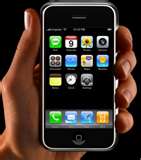 Does the average person realize they have needs that are met be well designed products? In Garr Reynolds brief 2004 online article “Why Design Matters“, he states, “…design is about humans creating great works that help or improve the lives of other humans, often in profound ways, and often in ways that are quite small and go unnoticed.” Design has the ability to change human lifes, what a great statement. What a true statement.
Does the average person realize they have needs that are met be well designed products? In Garr Reynolds brief 2004 online article “Why Design Matters“, he states, “…design is about humans creating great works that help or improve the lives of other humans, often in profound ways, and often in ways that are quite small and go unnoticed.” Design has the ability to change human lifes, what a great statement. What a true statement.
Although it may not be obvious to most, the manner inwhich an object, product or service is designed is one of the main reasons individuals consume items, products or services. Cars are sold based on the exterior design. Typically, it is what attracts the customer to a particular vehicle; however, the components underneathe the hood are also designed to be just as attractive and efficient to the customer to enhance the driving experience. Another example are one to two year trade programs designed to educate and equip students with the knowledge needed to begin successful careers. These programs are planned to get individuals trained in a designated period of time and to almost gaurantee a promising future in that industry. Then there is the ergonomically designed iPhone that can has several capabilities that is designed to allows users to call or text friends, play video games, send and receive emails, take pictures and even record and upload video. This nifty gadget met a need millions of people did not even know they had. However, they bought into it because of its design, functionality and its ability to meet several needs.
Design matters because of the planning and organization necessary to identify peoples’ conscious and unconscious needs. It must be done well, as Reynolds points out, to change people’s lives. Poorly designed products have no use. Almost overnight the ipod replaced the Walkman because it was light weight, easy to carry, and could store more songs than people could ever imagine possible. The ipod revolutionized the way active individuals ran and exercised. The Walkman was just too bulky with limited options. This just goes to show, a well designed product not only meets a conscious or unconscious need, but its buying benefits are more readily obvious to the consumer.
We as humans and consumers are attracted to those items that seem to have some sort of buying benefit. In the apparel manufacturing and retailing components of the fashion industry a buying benefit is the positive result a customer should receive when wearing a garment. Wise manufacturers and retailers place those buying benefits in the description of the garments, when possible, along with selling points to bring to the shoppers attention the positive aspects of the garment’s design when the customer is considering purchasing and wearing a garment. For example, a one piece bathing suit designed to camaflouge the adominal area or not so toned “tummy” may be advertised to women who are conscious about that area of thier bodies. The garment may be described as rouching in the side seams to minimize and flatter body curves. The rouched side seams is the selling point while the effect of minimizing and flattering the body curves are the buying benefits. This is important to understand because during the design process the “designer” thought about the needs of the intended user/wearer of the garment and sought to satisfy those needs. Good design (and good designers) do just that– satisfy the customer’s needs in a positive manner, which is done correctly will change lives.
So yes, design matters in all fields, industries, and trades. A well planned and organized product that is appealing to the consumer because of its appearance (design) and ultimate ‘buying benefits’ will change that individual’s life because the designer planned it to meet that consumer’s conscious and unconscious needs.
Filed under: Jour 232 | Leave a comment »


